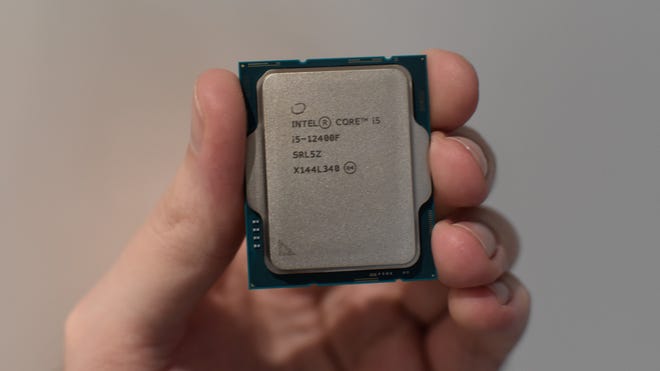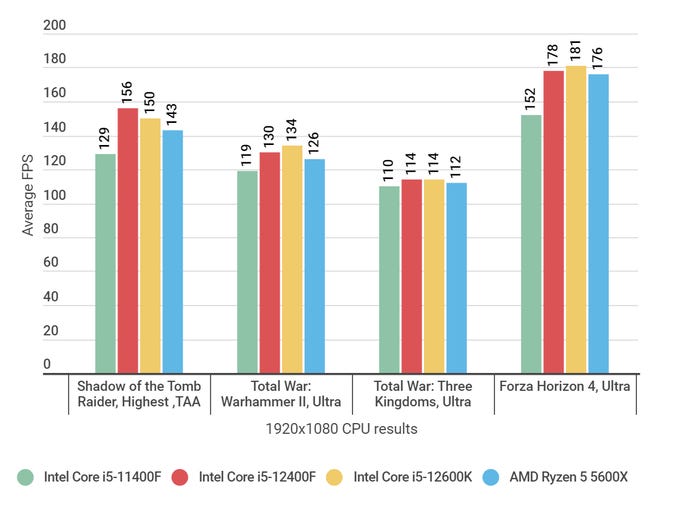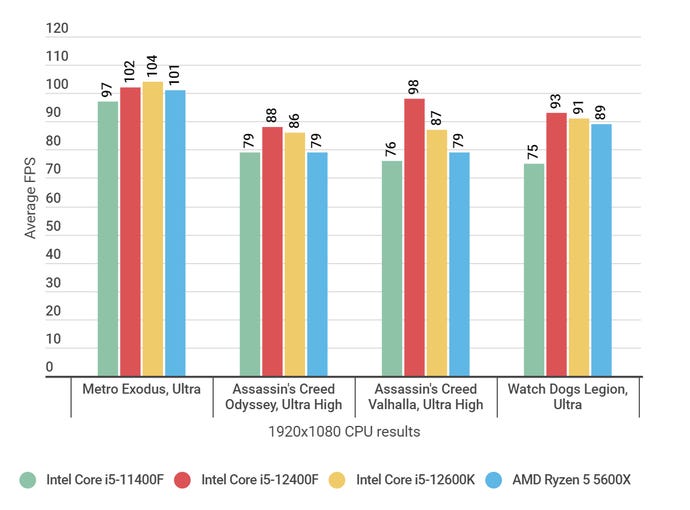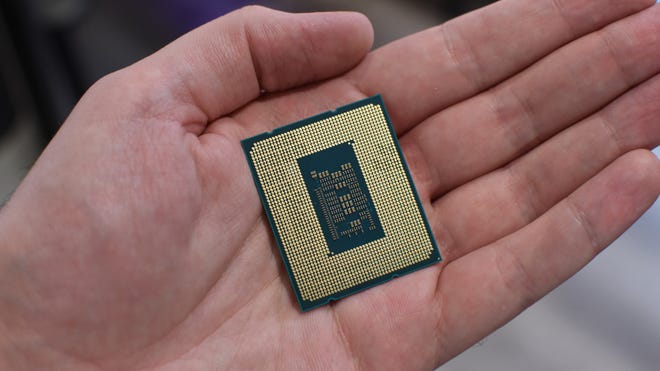Intel Core i5-12400F review: Core i5-12600K performance for £100 less
Even without E-cores, the Core i5-12400F is a gaming CPU bargain
There was cause for joy and concern alike when Intel revealed the Core i5-12400F, alongside loads of other new 12th gen Alder Lake CPUs. Here was a much more affordable, still gaming focused-alternative to the Core i5-12600K, yet it would lack the signature hybrid of fast Performance cores and flexible Efficiency cores that made that chip one of the best gaming CPUs ever made.
Turns out, the concern was for naught: the Core i5-12400F is a cracking slice of silicon, both for the money and for games specifically. Although the sole reliance on Performance cores (or P-cores) puts it behind the Core i5-12600K for desktop multitasking, if it’s just the frames per second you’re after, this cheaper chip can match and sometimes even surpass its big brother.
The Core i5-12400F does have a good pedigree, in fairness. Going back several generations now, pretty much every Intel CPU ending in “400F” has provided good gaming performance for less cash than the more headline-hungry 600K models. That in mind, the Core i5-12400F isn’t the most obvious upgrade on the last-gen Core i5-11400F: it has the same core count of 6, the same thread count of 12, the same top clock speed of 4.4GHz and even a slightly lower base clock speed of 2.5GHz. Then there’s all the ways in which it looks like a losing choice next to the (brilliant) Core i5-12600K: no overclocking support on most motherboards, no E-cores to augment the P-cores, no integrated graphics to fall back on if your graphics card dies, and lower frequencies across the board.
The upside is that at £180 / $180, the Core i5-12400F is about one-third cheaper than the Core i5-12600K, and still provides Alder Lake’s big futureproofing benefits. It’s compatible with both DDR4 and DDR5 RAM, just as its more expensive stablemates are, and besides having extra PCIe 4.0 lanes on the chip itself it will also be ready to work with PCIe 5.0 hardware once it’s available.

This chip having the same core count as its predecessor also shouldn’t hide the fact that they are very much not the same kind of cores. These 12th Gen P-cores are enough of an architectural improvement over the 11th Gen Cypress Cove core that the new chip still delivered a big step up in both single core and multicore portions of the Cinebench R20 benchmark.


The Core i5-12400F isn’t as much of a do-anything powerhouse as the Core i5-12600K, but it canes the Core i5-11400F on desktop duties and slips ahead of the Ryzen 5 5600X for good measure. That’s currently AMD’s best mid-range desktop CPU, and will be until the Ryzen 7000 series launches later this year, so for the cheaper Core i5-11400F to come along and pip it is quite the achievement.
The Core i5-11400F also beat AMD’s effort in every single one of our game benchmarks, often by a mere couple of frames but also with more visibly noticeable leads in Shadow of the Tomb Raider, Assassin’s Creed Odyssey and Assassin’s Creed Valhalla. Meaty improvements on the Core i5-11400F can also be found in the Forza Horizon 4 and Watch Dogs Legion results in particular.


The big surprise, though, was how the Core i5-12400F managed to edge ahead of the Core i5-12600K in four of these eight tests. I used the exact same test rig for both - comprised of an Asus ROG Maximus Z690 motherboard, 16GB of DDR5 RAM at 4800MHz, and an Nvidia GeForce RTX 2080 Ti Founders Edition GPU – and the pricier chip wasn’t anywhere near as dominant as I was expecting.
Even if you discount that weirdly high Valhalla result (it stayed consistent after multiple re-runs and double-checking of settings, for what it’s worth), the Core i5-12400F certainly looks like a match for the Core i5-12600K - and for £100 / $120 less. I’ve been staring into this gift horse’s mouth for a solid day but ultimately, it could be a few frames behind the Core i5-12600K and still be just as much of a good buy.
Assuming, that is, gaming performance is all you care about. It’s easy to see how the Core i5-12600K could be more worthwhile if your PC is also going to handle tasks like streaming or video editing; basically anything that can take better advantage of the hybrid P-core/E-core architecture. The K-suffixed model is fully unlocked for overclocking too, so will be able to go further for those willing to put in the time and effort. For a pure games machine, though, the Core i5-12400F suddenly looks like just as good a choice. Especially if you're not interested in overclocking.

Its lower power usage also translates into slightly cooler operating temperatures, which will in turn let your PC run quietly on lower-end cooling hardware. While running Cinebench with my test PC’s Asus Ryujin II 360 liquid cooler, the Core i5-12400F peaked at 62 degrees Celsius to the Core i5 12600K’s 67 degrees, and averaged about 57 degrees to the Core i5 12600K P-cores’ 60 degrees. On a much more basic Cooler Master Hyper 212 Evo V2 air cooler, the gap widened, with the Core i5-12400F peaking at 60 degrees and averaging around 55 degrees. The Core i5 12600K was hardly melting down, but its 71 degree peak and 67 degree P-core average show that the Core i5-12400F is just more efficient in transforming watts into frames.
To be clear, the Core i5-12600K is still a damn fine CPU; if someone broke or burglarised my own PC tomorrow, it’s probably the one I’d buy as a replacement. But then, my gaming PC is also my work PC and my video editing PC, so having the extra E-cores for multitasking would make more sense. Again, if you’re building a PC for games and games alone, why spend more except for potential overclocking? The Core i5-12400F will perform just as well straight out of the box, not to mention better than the Ryzen 5 5600X, and all at a price level that straddles budget and mid-range.


